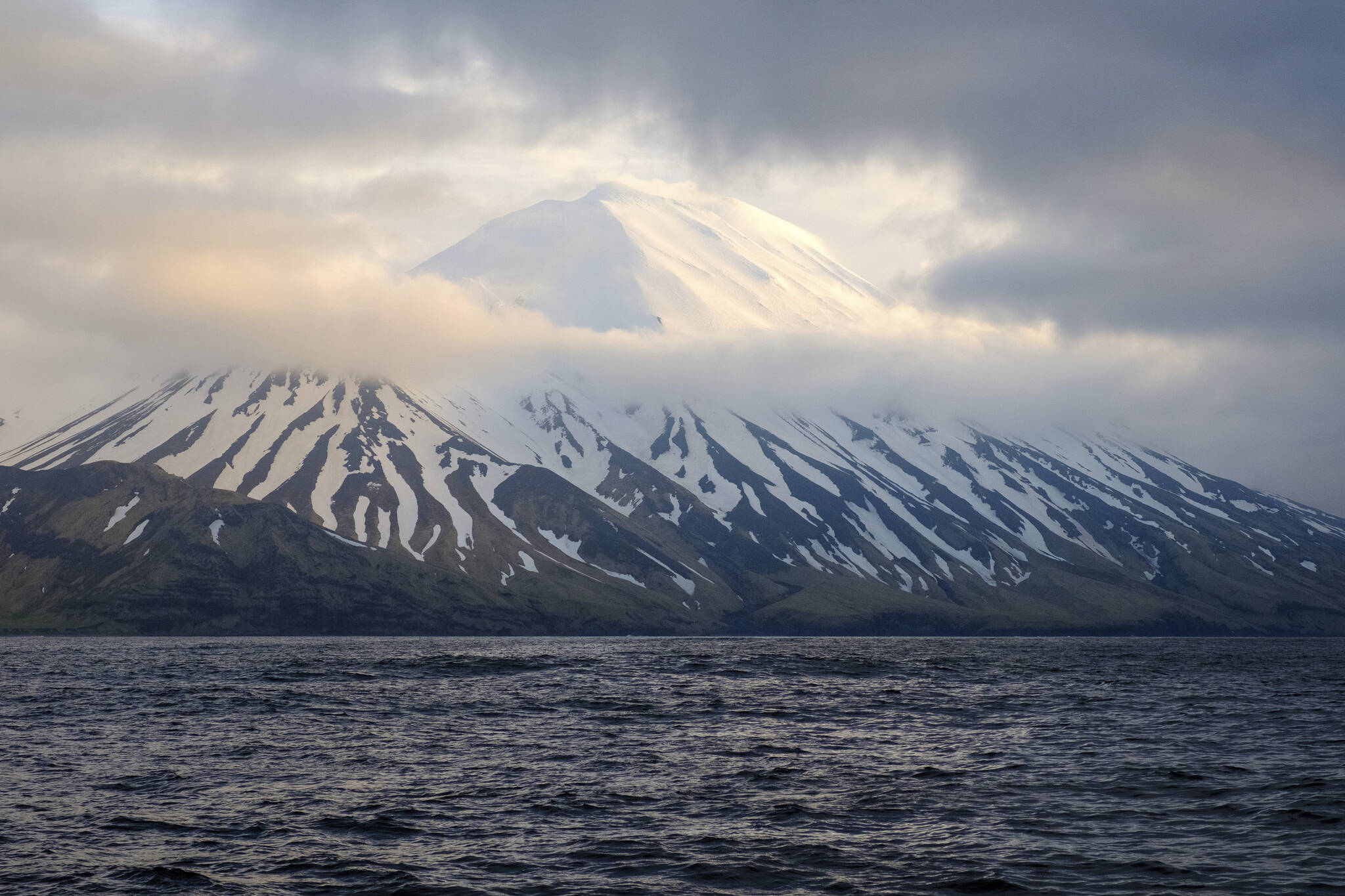ANCHORAGE — A swarm of earthquakes occurring over the past few weeks has intensified at a remote Alaska volcano dormant for over a century, a possible indication of an impending eruption.
The Alaska Volcano Observatory raised the alert level to advisory status for Tanaga Volcano late Tuesday after the quakes became very vigorous.
“We started seeing a whole lot of earthquakes occurring, one after the other, several per minute,” said John Power, a research geophysicist with the U.S. Geological Survey stationed in Anchorage at the Alaska Volcano Observatory.
There have been hundreds of small earthquakes, none larger than magnitude 2.75, but they are concentrated beneath the summit of the volcano, he said.
“That indicates that we’re seeing significant unrest at the volcano,” Power said.
“Whether or not this will lead to an eruption is something we can’t say at this point in time,” he said. “But we are concerned about it enough that we have gone and elevated the warning level.”
While the increase causes concern, he said many times earthquake activity will drop off with no eruption.
“It’s anybody’s guess as to where this particular round of earthquake activity may end up,” he said.
The volcano is on an uninhabited island in the western Aleutians, about 1,250 miles (2,012 kilometers) southwest of Anchorage. There are no communities or structures there, but Adak, a city of about 170 residents on another island, is about 65 miles (105 kilometers) away and could see ashfall.
If the volcano were to erupt, the biggest threat would be to aircraft. The Aleutians are below the routes that jets fly between North America and Asia. Volcanic ash is angular and sharp and can cause an airplane engine to shut down. Previous eruptions had both ash clouds and viscous lava that moves very slowly away from the mountain, much like what happened at Mount St. Helens in Washington state in 1980.
“It’s very different than what you would see, for example, in Hawaii, Kilauea or Mauna Loa, where you see these beautiful red rivers of lava flowing down the side of the volcano,” Power said.
Tanaga is actually part of a three-volcano complex on the island. It’s the tallest of the three at 5,925 feet (1,806 meters). It sits in the middle, with Sajaka, a 4,443-foot volcano to its west. Sajaka had an older cone that collapsed into the North Pacific Ocean with a new cone that has emerged.
To the east of Tanaga is Takawangha, a 4,75-foot (1,449-meter) volcano that is mostly ice-covered except for four craters, the Alaska Volcano Observatory says.
The last known eruption for Tanaga was in 1914. It erupted twice in the late 1700s and again in 1829.
The observatory in a release said there are no known eruptions of Takawangha or Sajaka. However, field work has indicated that eruptions may have occurred from those volcanos and were attributed to Tanaga.

